Your foot is a complex area of the body, it's small compared to the rest of your body but it's packed full of tendons, ligaments, muscles and bones. Each toe in your foot has a small fibrous band of tissue called a ligament that connects the foot bones to the toe bones. The plantar plate(s) are a special type of ligament that is super strong and flexible. These plantar plates' job is to help pull your toes down toward to the floor. The plate helps stabilize your toe from shifting side-to-side and maintains the toe in its correct position. Each foot contains four of these plantar plates, one for each toe except the big toe, which does not have a plantar ligament plate.
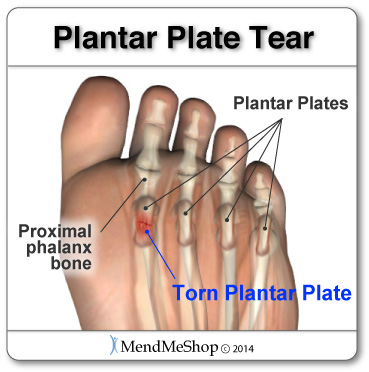
If you are suffering from a plantar plate tear you may feel as if you're 'walking on the bones of your foot'. You could have pain beneath your 2nd (this is the most common area of pain), 3rd or 4th toes that gets worse with walking, jumping or running. You may have felt a tearing sensation when the injury originally happened. The toe could have dislocated and 'popped' back into place.
If you're suffering with a lot of pain you may develop a limp to avoid the pain and placing any weight on your foot. You may also notice swelling and redness on the top of you foot. If your plantar plate injury is severe you may have had bruising near or over the affected toe. If left untreated, your foot/toe will develop a toe deformity called 'hammer toe'.
You might be suffering from a Plantar Plate Tear if:

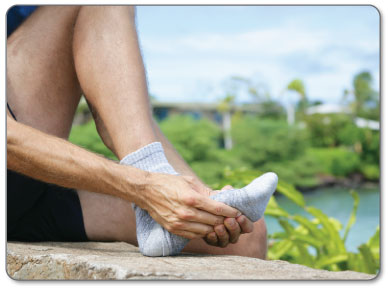
If any of those statements are true for you or you're suffering from on-going pain under your toe(s) or at the front of your foot then you might have a "Plantar Plate Tear". It's an injury that's not commonly heard of - people are more likely to understand that they might have plantar fasciitis, tendonitis or some other injury in their foot.
Many people don't know that a plantar plate tear is a very real injury affecting the soft tissue and bone(s) in your toes. It can happen to anyone who regularly puts a lot of pressure on the front of their foot.
Plantar Plate Tears are one of those injuries that can really bring down the quality of your life. Anyone - young or old - can suffer from this injury, and if you're active this condition will keep you from doing the things you love to do. It will even start interrupting any of your normal daily tasks and make living life harder than it really needs to be.
Plantar Plate tears can happen to anyone, not just professional athletes. Right now, there are thousands of doctors and physical therapists dealing with patients that require a solution to treat their plantar plate tears fast and heal it (where possible). If you want to be proactive about properly addressing your plantar plate tear, speak to your doctor about adding to your treatment with AidYourTendon's system utilizing Circulatory Boost and cold.
Acute injury: Plantar plate injury can come from:
Chronic injury: This type of plantar plate injury has developed over time. The ligament suffers from micro-tears in the tissue and is stretched out. You may have had a sudden acute injury at first but left untreated and undiagnosed it has not healed and turned 'chronic'. The most common cause of chronic plantar plate tears is when your feet over-pronate or roll inward. It's very common for middle aged women to experience plantar plate tears as the foot is rolling inward when they walk. Over time a chronic injury may lead to a severely deformed toe that is locked out of normal position.
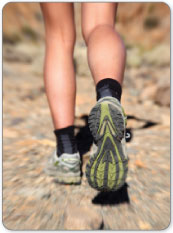
Long-term changes in your gait (the way you walk) - like shuffling or limping to reduce pain around your toes, can impact other areas of your body and possibly result in something called 'overcompensation pain'.
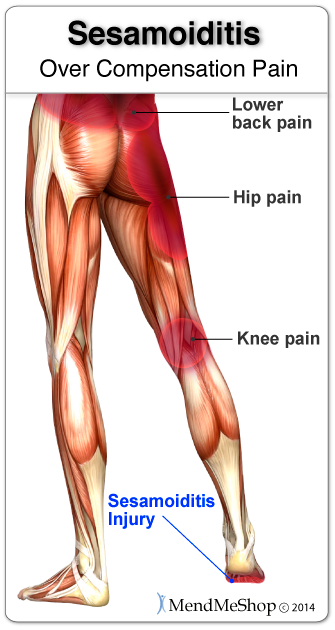
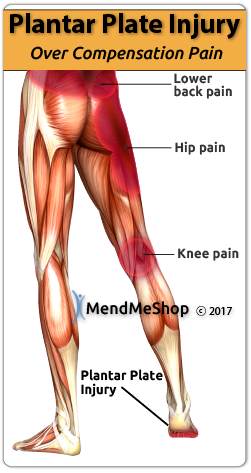
Everything in the human body is connected. A plantar plate injury can lead to other injuries over time if not treated properly. You might start limping or shuffling because of your injured foot and place more weight on your opposite, healthy foot. Limping your way around for a long period of time may lead to pain in the heel of your foot, knee, hip or lower back on your injured side because you are mis-aligning your entire leg. The goal is to prevent secondary injuries while letting your toes heal. If you are changing the way you walk - try keeping your foot straight and off to the side to compensate for the injury.
Any injury left untreated can lead to overcompensation pain. Dealing with the injury quickly and healing completely should be your main focus. Plantar plate healing takes time... You can speed up your body's natural healing with very simple steps - like using a Cold Compress or Ice Pack, rest and a TShellz Wrap®.
It's important to find out what's wrong with your foot. Plantar plate injuries are often misdiagnosed as they are similar to some other injuries that affect the foot. This is very true for those who are very active or enjoy running sports. When seeing your doctor they will discuss your medical history and examine your foot, heel and ankle for any deformities or inflammation (swelling, redness, heat, pain). They will also look at your flexibility, stability, and gait (the way you walk). Occasionally an x-ray of your foot will help rule out Metatarsal (toe) Stress Fractures. An MRI can be used to provide a complete and accurate diagnosis of any injury to the soft tissue (ligaments) in your toes. In some cases the doctor will request blood tests to rule out diseases or infections.
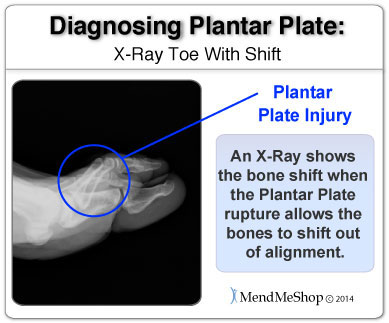
Our feet are some of the most complicated joints in our bodies with 26 bones, 33 joints and more than 100 tendons, muscles and ligaments (reference: 1). Toe pain can come from injuries to the soft tissue in the foot or to one of the many tiny small bones, some of the more common injuries being:
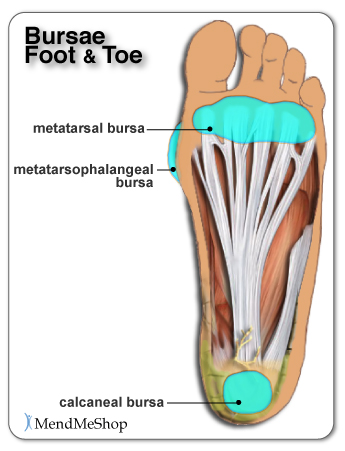
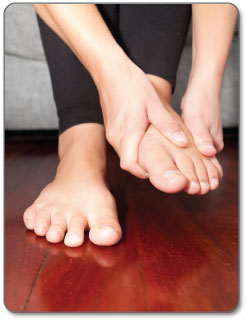
The good news is that most plantar plate tears will heal with simple home conservative treatments and surgery is often not needed!
It's generally understood by doctors and surgeons, that surgery will introduce more scar tissue into the foot. This added scar tissue will be problematic, requiring visits to the clinic and conservative treatment options post-surgery. When it comes to a plantar plate tear, rupture, and bone fractures there's only a few surgical options for treatment - sutures are used to repair the torn tissue. This is why surgery is only performed as a last resort for chronic plantar plate injuries, generally reserved for complete ruptures or fractured metatarsal bones that won't heal with conservative treatment methods.
A cushioned athletic shoe with a wide toe-box may relieve pressure on you plantar plate injury. Taping the toe down or taping the toe to the neighbouring toes may help keep the condition from worsening.
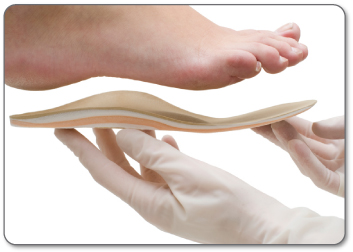
If you need to have surgery, talk to your doctor about using these same products for post-surgery recovery. You'll find them effective for reducing post-surgery inflammation, enhancing range of motion and minimizing the growth of scar tissue in your foot.
Usually, conservative treatment methods are all that's needed to treat a plantar plate tear. Surgery is only ever used if long-term conservative treatment methods don't work or if you've suffered from a plantar plate rupture, hammertoe or a deformity in your toes/foot. Conservative treatment options for plantar plate injury typically includes rest, icing of the injury, avoiding activities that cause or worsen the pain that you're feeling, wearing comfortable shoes that keep your toes straight and anti-inflammatory over-the-counter medication (reference: 1, 2, 3, 4, 5). However, sometimes Plantar Plate Surgery does happen.
If you and your doctor have decided that your injury is in a state of non-healing and conservative treatments have not worked to correct your plantar plate tear, typically one of the two following types of surgical procedures available to repair your plantar plate.
Surgery involving a correction to your bone will be performed if you suffer from a chronic plantar plate injury that has resulted in your toe raising up off the floor or pulling away and crossing over your other toe(s). In extreme cases you may now have hammertoe that needs to be corrected surgically. Surgery to correct the hammertoe often requires a transfer of tendon tissue called a 'flexor to extensor tendon transfer'.
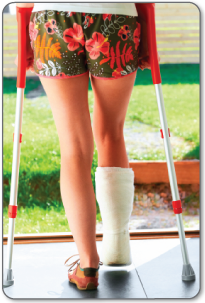
This plantar plate repair is done with sutures to re-position your toe and a tiny amount of bone is removed (removal of this bone is called a 'Weil Osteotomy'). The shortening of the toe allows the surgeon to gain access to the plantar plate and decreases tension and forefoot pressure post-operatively. The goal of the surgery is to relieve pain at the bottom of your toe, re-align the toe and bring the toe back down toward the floor.
You may be fitted with a hard cast or a surgical shoe that you may have to wear for approximately 6 weeks. The amount of time you'll have to wear this cast depends on the amount of work the surgeon had to perform to fix your plantar plate and correct your toe. In most cases this is an 'out patient' surgery where you will arrive that morning and leave the same day as your surgery (no hospital stay is required).
During post-surgery recovery after-care is very important in order to keep the toe in the proper position while healing. Depending on the type of that you have job you may need to take at least one week off (especially if extensive standing, walking, climbing, etc is involved). Consistent cold compression is important during early recovery to reduce swelling, inflammation and naturally treat any pain. Your surgeon will schedule a follow-up visit 1 to 2 weeks after surgery to check your toe and the incision site. You may have a temporary cast or bandage removed if you were originally placed in one right after surgery and begin wearing a more permanent, hard, surgical cast. Another method your doctor may use is tapping your toe to reduce pressure. If your toe is taped, this tape will need to stay on for about 6 weeks.
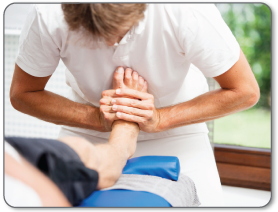
Around the 2nd or 3rd week of recovery, your surgeon will have you begin stretching and exercising your toes. Exercises may include crunches by picking up a marble with your toes. Transitioning back into regular shoes usually happens around 6 weeks, but this depends on how well you're healing. At this point you may begin to walk more normally and become less flat-footed. Your regular check-ups with your surgeon and your overall healing progress will be the guide. It may take up to 12 weeks for you to return to other normal activities - like walking briskly or jogging.
One of the new techniques of performing a plantar plate surgery involves the use of smaller tools and an incision site on the top of your foot. This new technique provides quicker recovery and less risk of postoperative problems than the traditional method we already mentioned. An incision at the top of the foot actually makes your recovery faster because it means you won't be stepping on your incision (in your cast or with the aid of crutches) while trying to recover.
You should always discuss the type of surgery your doctor plans to perform before you have your surgery. As with any surgery, there are many complications that can arise and so it's always important to discuss all possible complications with your surgeon to choose the correct path for your recovery.
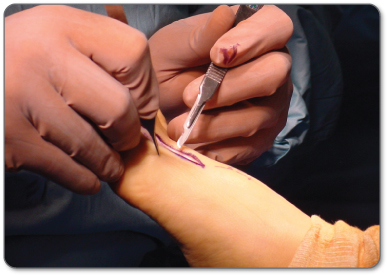
Product Advisors are available 9:00 am to 5:00 pm Eastern Standard Time Monday to Friday.
I want to learn more about Post-Surgery Recovery
I want to learn more about TShellz Wrap® Circulatory Boost
I want to learn more about Ice & Heat: Which Is Better For Treatment?
I want to learn more about Tendonitis Treatments
I want to learn more about Tendonitis Surgery
During your recovery, you will probably have to modify and/or eliminate any activities that cause pain or discomfort at the location of your soft tissue injury until the pain and inflammation settle. The more diligent you are with your treatment and rehabilitation, the faster you will see successful results!
Please be aware that this information is neither intended nor implied to be a substitute for professional medical advice. CALL YOUR HEALTHCARE PROVIDER IMMEDIATELY IF YOU THINK YOU MAY HAVE A MEDICAL EMERGENCY. Always seek the advice of your physician or other qualified health provider before using any of our outstanding products to make sure they are right for you and your condition or if you have any questions regarding a medical condition. Always see your doctor for a proper diagnosis as there are often many injuries and conditions (some very serious) that could be the cause of your pain.
© 2025 In.Genu Design Group, Inc. Contact Us